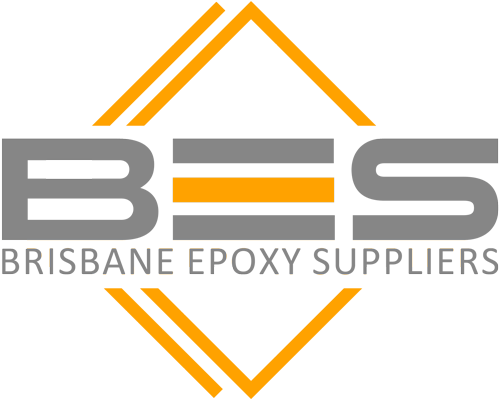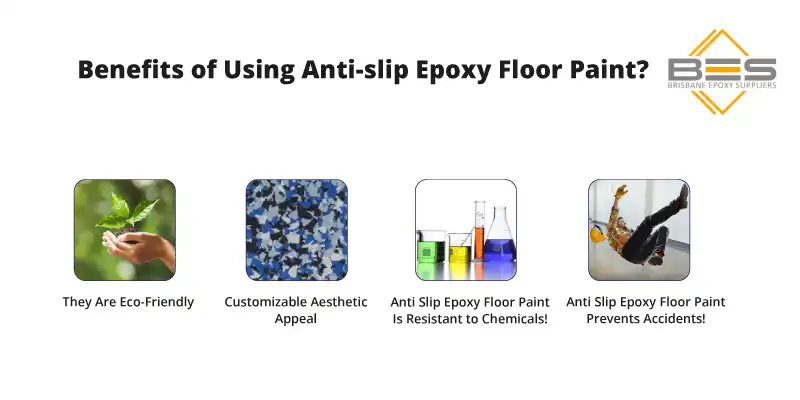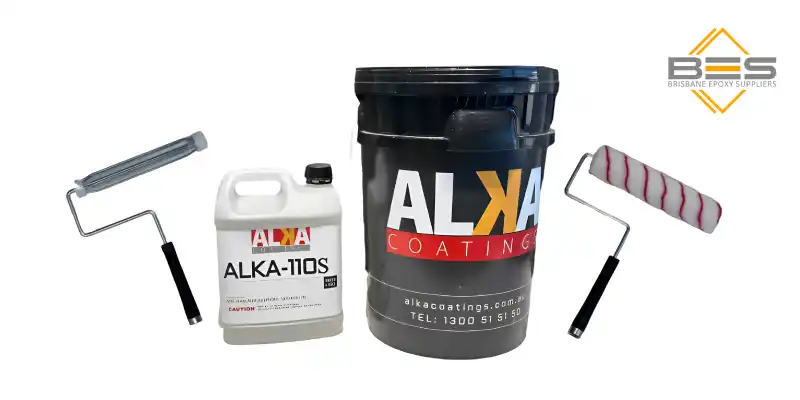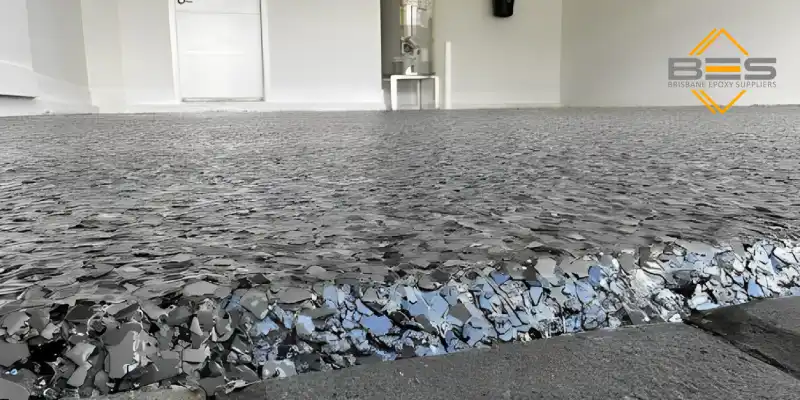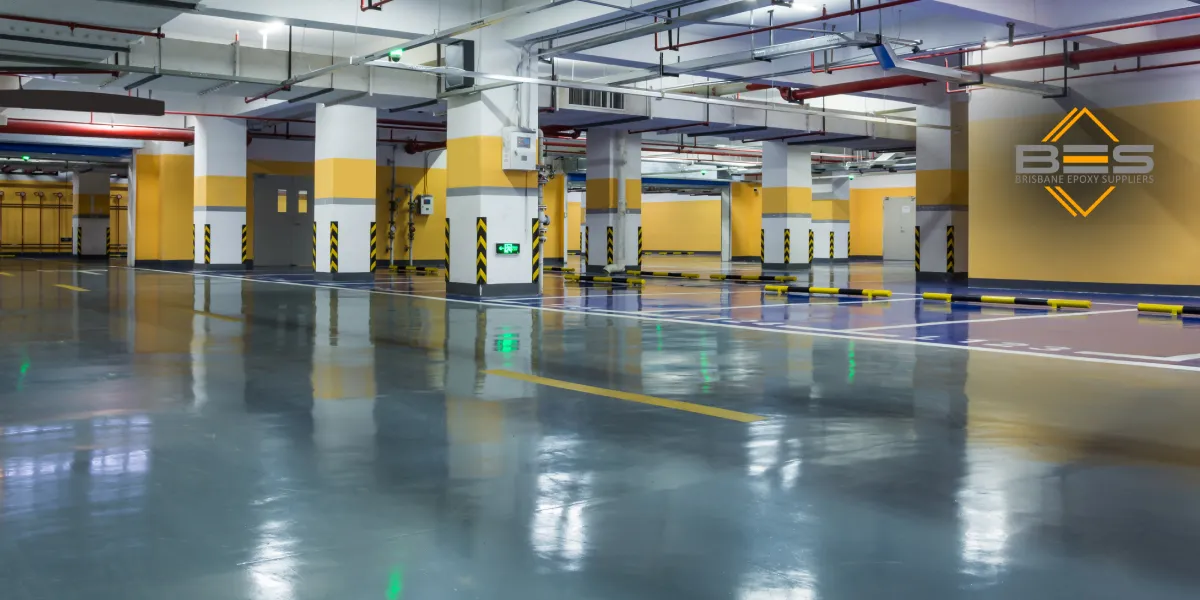Anti-Slip Epoxy Floor Paint: Does It Really Work?
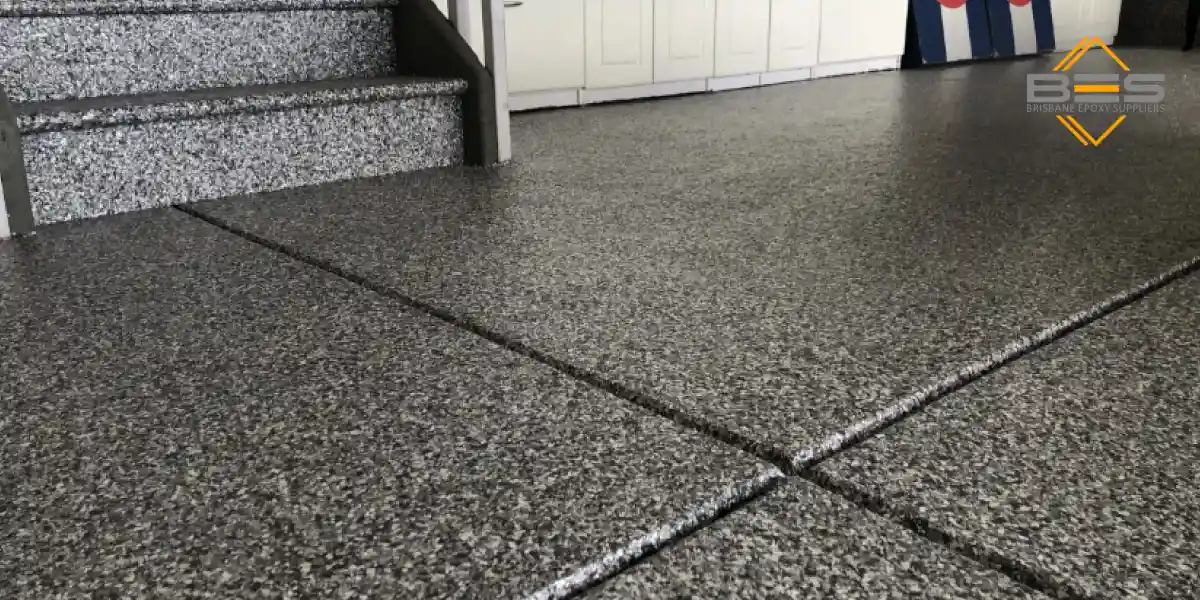
If you are searching for a non-slip, durable surface on your building’s floor, then anti-slip epoxy floor paint is your only choice. These unique and special coatings are designed to bring beauty to your place. You can use this unique flooring paint in various places, from industrial factories to residential garages. And to your amazement, they offer more than just safety.
Anti-slip epoxy floor paint is resistant to all kinds of chemicals, stains, and impact, and you can also apply it to concrete, wood, and tile floors. Isn’t that amazing?
What is Anti-slip Epoxy Floor Paint?
What is anti-slip epoxy floor paint? Anti-slip epoxy floor is made of epoxy resin and aggregate materials such as silica, sand, or aluminum oxide. When you add these materials to the epoxy resin, it increases the friction of surfaces, reducing the likelihood of slips and falls. Anti-slip epoxy floor paint brings magic to your place.
This kind of epoxy is considered the best choice for high-traffic areas or environments where spills and moisture are common. We have always known that epoxy coatings are durable and resistant to wear and tear. Now, with this anti-slip variant, you have finally found the best solution for slippery environments like garages, kitchens, warehouses, and outdoor areas.
Benefits of Using Anti-slip Epoxy Floor Paint?
Epoxy floors offer numerous advantages, and high durability, and safety is the least of them. Here are some advantages that will make anti-slip epoxy floor paint a suitable choice for your place.
1-They Are Eco-Friendly
Since epoxy floors are long-lasting, they reduce the need for frequent replacements. This will lower the overall environmental impact. No wonder epoxy floors are considered an eco-friendly option. In addition, some kinds of epoxy floors have special formulations that are low in volatile organic compounds (VOCs). This means that they emit fewer harmful chemicals into the atmosphere during application and curing.
2- Customizable Aesthetic Appeal
With epoxy floors, you don’t have to sacrifice aesthetics! On the contrary, you can choose your favorite color and finishes that match the design of your place. How about a seamless and polished look for a commercial kitchen or metallic finishes and multi-colored design for your modern home interior design? The choice is yours.
3- Anti-Slip Epoxy Floor Paint Is Resistant to Chemicals!
If you are searching for flooring that is resistant to chemicals, oils, and solvents, then epoxy flooring is your best choice. Unlike typical floors like concrete or tile, harsh chemicals won’t eat away anti-slip epoxy floor paints. Its abrasion resistance also means it can withstand frequent scrubbing or exposure to cleaning chemicals without deteriorating. However, we strongly recommend not to use harsh chemicals for cleaning epoxy paint.
4- Anti-Slip Epoxy Floor Paint Prevents Accidents!
When you use anti slip epoxy floor paint, you don’t need to worry about safety anymore. It doesn’t matter if it’s a restaurant or factory; epoxy floor paint is a wise decision. This kind of epoxy reduces the risk of accidents and ensures safety. Safety is considered a major issue in workplaces and even home garages.
Even in public places with high foot traffic or slippery conditions, applying anti-slip epoxy floors can reduce the occurrence of slips and falls. Hospital, school, or commercial kitchen? Anti-slip epoxy floor paint is the best choice.
Differences Between Anti-slip Epoxy and Adaptive Epoxy
Anti slip epoxy floor paint or adaptive epoxy paint? Both of them offer protection; however, their applications and features differ. If you want to choose the best option, understanding these differences will help you along the way.
Necessary Tools and Materials for Applying Anti-slip Epoxy
If you’re going to apply epoxy resin yourself, you need to prepare all the necessary materials and tools before even starting the process. If you want to successfully finish your DIY project, here’s a list of necessary tools and materials.
Essential Materials
Anti-slip epoxy floor paint kit: This pack includes the epoxy resin, hardener, and non-slip grit additive. If you care about the result, we strongly recommend choosing a high-quality kit.
Alka 110 S: A layer of Alka 110 S primer will help the epoxy paint to bond better and strongly with the surface.
Degreaser: Before applying the epoxy paint, you need to clean oil, grease, and dirt from the floor. Degreaser is a strong material that will clean any kind of dirt and debris.
Alka 202: You can use Alka 202 epoxy resin for outdoor places that are exposed to sunlight.
Grit additive: Some kind of epoxy paint already has a grit additive. But if not already included in your epoxy paint, you can add some aggregate material like silica or aluminum oxide into the paint.
Alka 112: Alka 112 is one of the best epoxy resin ever that you can use on wet floors.
Alka 110 GP: This one is one of the self-smoothing epoxy resins that can withstand high foot traffic.
Patching Compound: You can fill in any cracks or imperfections with this pack. As you know, fixing the cracks is essential before starting the painting process.
Sika 94:One of the best primers that you can use before epoxy application. Sika 94 is also considered a non-slip epoxy floor.
Essential Tools
Paint roller: You’re going to need a paint roller with an extension handle to apply the epoxy evenly.
Mixing bucket: This kind of bucket is specifically designed for mixing epoxy resin and hardener.
Mixing paddle: You can add a mixing paddle to a power drill to thoroughly mix the epoxy components.
Scrub brush: As you know, you must clean the floor before applying epoxy resin. Use a scrub brush to thoroughly clean the floor and remove any kind of dirt and dust.
Step-by-Step Guide to Applying Anti-Slip Epoxy Floor Paint
If you have decided to apply the epoxy paint yourself, then it’s crucial to follow a structured process. Follow these steps to achieve the best possible result for your DIY project.
Step 1: Prepare the Surface
Believe it or not, the quality of the surface preparation will greatly affect how well the epoxy bonds to the floor. First of all, you must clean the surface with a degreaser to remove any oils, grease, and dirt. Remember to completely dry the floor before applying the epoxy paint.
You can also use a vacuum to remove dust and debris after cleaning. This will help prevent particles from becoming embedded in the epoxy.
Step 2: Repair Cracks and Imperfections
There shouldn’t be any cracks, holes, or uneven sections on the floor. Use a concrete patching compound to fill in these imperfections on the floor. Let it dry completely before applying the epoxy paint. Do not forget to sand any raised areas before epoxy application.
Step 3: Apply Epoxy Primer
A layer of epoxy primer makes sure that the epoxy coating bonds strongly to the floor. Do not ever ignore this stage, as it helps create a more even surface for the epoxy. Use a paint roller and apply a thin, even layer of primer. After 12 to 2 hours, the primer is completely dry, and you can add epoxy paint.
Step 4: Mix the Epoxy Paint
At this stage, you should mix epoxy resin and hardener in a bucket. Follow the manufacturer’s instructions for mixing these components and only mix as much epoxy as you can apply in about 30-40 minutes. Because the epoxy will begin to harden once mixed, and you need to apply it fast.
Remember, now is the time to add anti slip grit additive to the epoxy. Blend the mixture thoroughly for several minutes to make sure that the epoxy is well combined.
Step 5: Apply Epoxy Paint to the Floor
You should pour the epoxy paint onto the floor in sections and use a squeegee to spread it out. A paint roller will also help you to smooth it out. Once the first coat is completely dry, it’s time to apply the second coat. After finishing the second coat, you must let the epoxy paint dry completely.
You may need to wait up to 7 days for the epoxy to fully harden, and remember to avoid washing the floor during the curing process.
Best Places to Use Anti-Slip Epoxy Floor Paint?
We can use anti-slip epoxy floors in a wide range of buildings. If you’re still unsure about the most suitable places for using this kind of epoxy, here’s a small hint.
- Factory floors and warehouses
- Garages and workshops
- Commercial kitchens
- Hospital and healthcare facility hallways
- Restaurants and bars
- Swimming pool surrounds and patios
- Public restrooms and shower areas
- Auto repair shops and showrooms
- Loading docks
- Gymnasiums and fitness centers
In all of these places, safety and durability come first! Therefore, when it comes to safety and high resistance to chemicals, anti-slip epoxy paint is the best choice ever!
Do We Need to Use Anti-Slip Epoxy Paint?
Anti slip epoxy paint is a practical solution for improving safety in different places, like warehouses and garage floors. It can withstand heavy wear and tear and you don’t have to worry about safety anymore. Finally, if you are searching for a durable flooring that can prevent slips, anti slip epoxy paint is your choice.
Conclusion
Anti-slip epoxy floor paint is more than just a safety measure — it’s a smart, long-lasting investment for any space where slips and falls are a concern. Whether you’re upgrading a commercial kitchen, a garage, or a warehouse, this type of coating offers durability, chemical resistance, and peace of mind. With proper application and the right materials, you can transform any slippery surface into a secure and attractive area. If safety, strength, and style matter to you, anti-slip epoxy floor paint is the solution you’ve been looking for.
